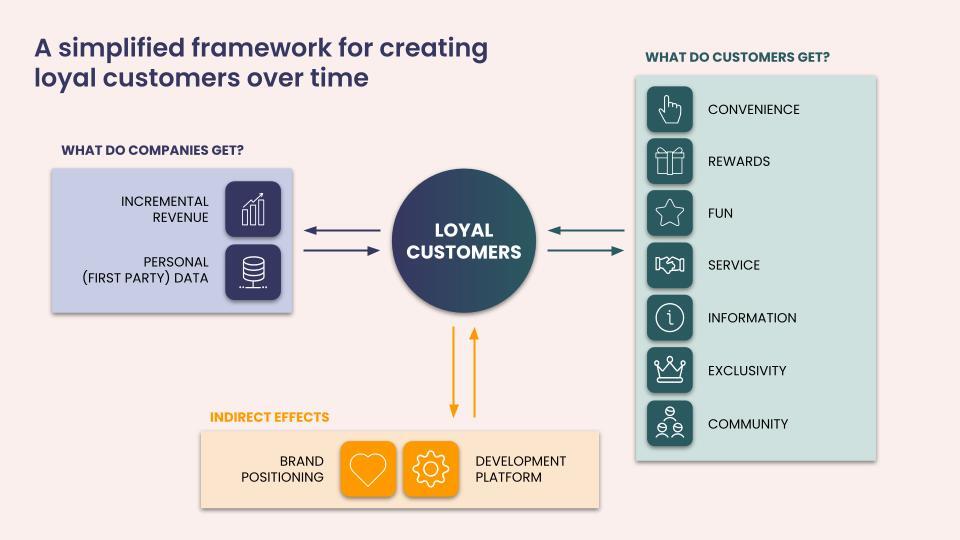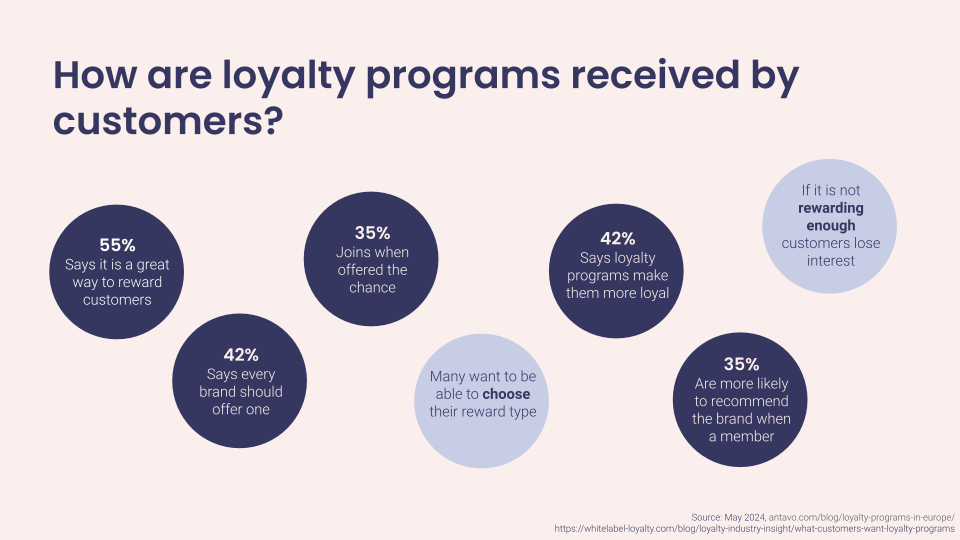Customer loyalty programs often spark debates among marketers and business leaders. Are they worth the investment, or are they just another cost center? In our recent webinar (available on demand here), we explored this topic in-depth, drawing on insights from our best experts in the field. Now we’d like to share the main learnings with you in this blog.
But before we get to the insights, what do we mean when we talk about loyalty? This is the definition we refer to:
Measures to increase your share of wallet with your customers, to get them to buy more from you, and less from others and to do this over a longer period of time.
A well-designed loyalty program is valuable for both parties
Loyalty programs are not a one-size-fits-all solution. They should be carefully designed and implemented to deliver value both to the business and its customers. It costs 5 to 10 times more to acquire new customers than to retain existing ones, so keeping customers loyal saves you money. Additionally, existing customers spend on average up to 67% more than new customers.
Loyal customers often become brand advocates, providing free marketing through word of mouth. The Pareto principle usually applies here too: 20% of your best customers typically account for 80% of your sales. You can do the math, nurturing loyal customers seems to be worth the effort.
The question you should ask yourself is not only what the company will get out of this, but you should also think about how your customers will benefit from the program. What’s in it for them and what do they value? Sometimes it might be convenience, sometimes rewards, exclusivity or entertainment.

This simplified framework can help you in crafting your strategy.
Misconceptions about costly discounts and flooding mailboxes
Despite their benefits, loyalty programs are sometimes questioned for their effectiveness. Will the discounts and offers have negative effects on margins? Some are worried about customers getting tired of constant email campaigns, and some think branding is the only thing that matters and everything else is a waste of money.
These challenges may be real, and therefore they underscore the importance of designing loyalty programs that are both cost-effective and engaging for customers.

Some statistics on how customers receive loyalty programs.
Make it targeted, make it effective
You will need a clear strategy of how to maximise CLV (customer lifetime value) systematically and at scale. To ensure your loyalty program is effective, it’s crucial to focus on customer data collection and analysis. You need to recognize the key moments during the customer journey and get the most out of those moments.
Proper data allows for the personalization of offers and communications, which can significantly enhance customer engagement. We cannot emphasize enough the importance of delivering individually tailored content and offers based on customer insights. Additionally, simplicity and emotional engagement are key.
To summarise three important features of any loyalty program, they need to: be easy to use and understand, offer great perceived value such as discounts and rewards, and incorporate the freedom of choice.
Loyalty programs need to be part of your overall marketing strategy
Loyalty programs should not exist in isolation but should be integrated with your overall marketing strategy to maximize their impact. Consistency across all marketing channels, such as e-commerce and paid media, is essential.
Data from loyalty programs should inform broader marketing strategies and improve customer experiences. Adopting a holistic approach and treating your loyalty program as a development platform that can evolve and grow with your business can lead to long-term success.
7 low hanging fruits to take the next step in your loyalty journey
- Identify who your most valuable customers are
- Identify the customers with potential
- Implement an RFM model (Recency, Frequency, and Monetary value)
- Implement a CLM framework (Customer Lifecycle Management)
- Understand which loyalty efforts suit your industry and customer the best
- What do you intend to give back to your customers, is it valuable enough? Convenience, rewards, exclusivity, entertainment, etc.
- Where is the “threshold” after which customer engagement becomes organic?
All in all, whatever your martech stack looks like today, there are always ways to get more out of what you already have. Loyalty programs, when executed with thought, can be a cornerstone of success for any business, enhancing customer retention and driving revenue growth.
Can you say a confident Yes! to each of these questions?
- Do you have a loyalty strategy and is it incorporated in your corporate strategy?
- Do you truly understand your customers, customer segments and their potential?
- Do you have the data and tools in place to activate and automate customer communication to influence behaviour?
If not, you should reach out and let us help you.
Contact usPS. If you want to hear the in-depth discussions and get into the details of how to create a successful loyalty program, make sure to watch the full webinar here.